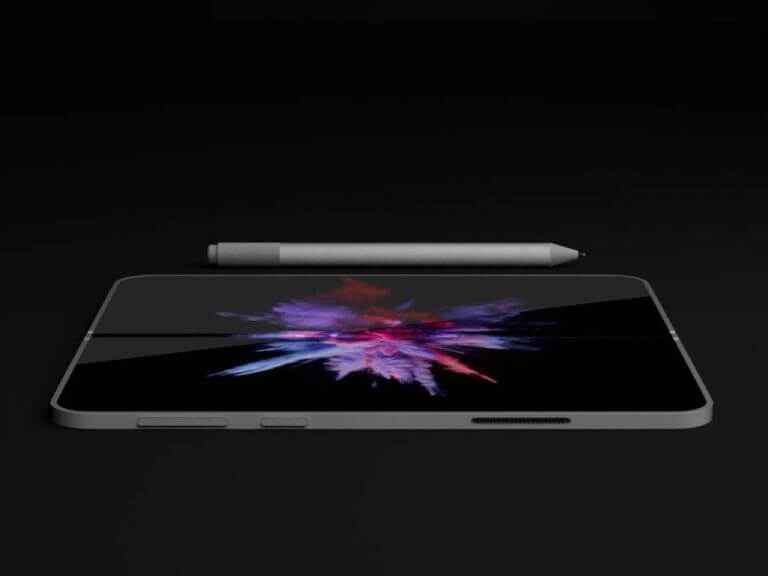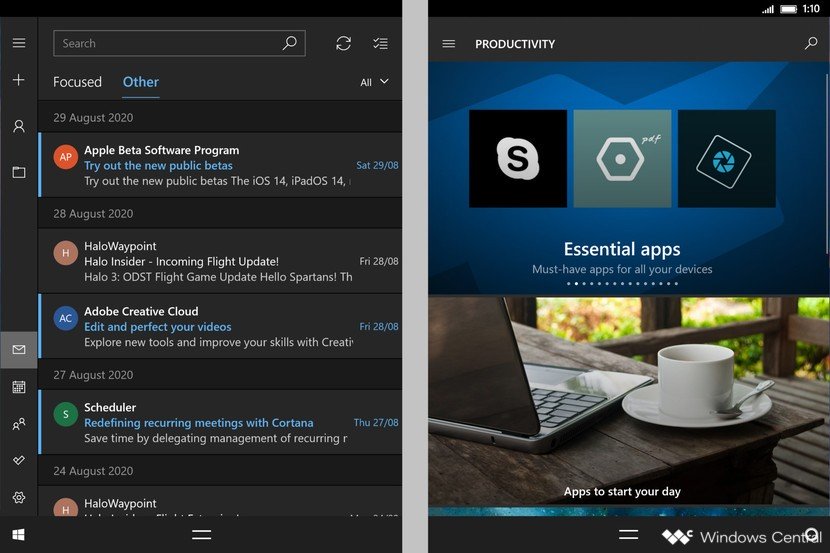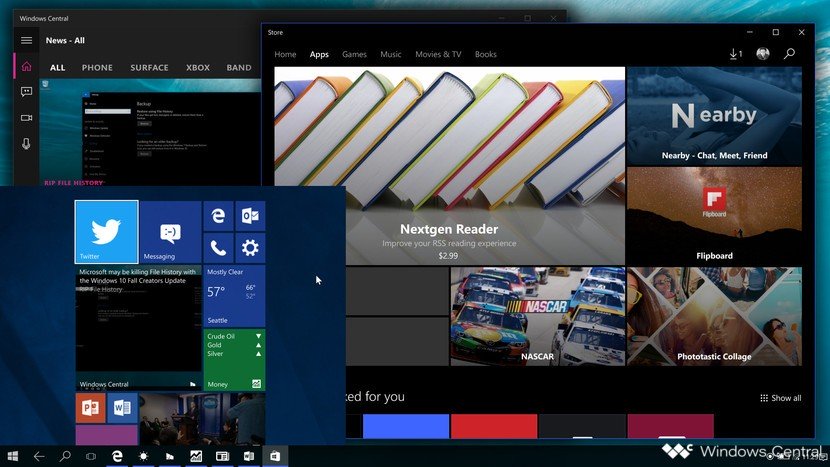Microsoft’s Surface Duo, which has recently started shipping in the US, had a very complex development cycle that saw its software move from a Windows-based OS to Android. The original project codenamed Andromeda required Microsoft to optimize Windows for a pocketable dual-screen device, and the task was presumably so challenging that the company eventually opted for using using Android instead.
After previous reports suggested that Microsoft had definitely shelved Andromeda and its “Surface phone” dream, seeing the company unveil the Android-based Surface Duo last year was quite a surprise, to say the least. Microsoft worked with Google to optimize Android for the dual-screen Surface Duo, but we’ve never seen much of what the previous Windows-based “AndromedaOS” looked like.
Today, Zac Bowden from Windows Central finally gave us a glimpse at AndromedaOS with a couple of mockup images that try to recreate the real OS that Bowden saw in pictures and videos. Overall, it’s quite fascinating to see what a Surface Duo running a Windows 10-based OS would have worked, and the company apparently went as far as re-creating the Continuum desktop experience that debuted on Windows 10 Mobile.

AndromedaOS was built on Windows Core OS, a new lightweight and modular version of Windows that powers the HoloLens 2 OS today, as well as the still in development Windows 10X OS expected to ship on Chromebook-like laptops next year. AndromedaOS also leverages Microsoft’s Composable Shell (CShell), which would adapt to single-screen, dual-screen use, as well as the aforementioned Continuum experience.
At the beginning, AndromedaOS was heavily inspired by Microsoft’s old Courier prototype, and it used an interactive journal for its home screen experience. “AndromedaOS featured a user experience built around a journal app, codenamed Jamdani. This app mimicked a real journal, with virtual pages that could be turned and was designed primarily for pen input. You could attach virtual sticky notes, images, and files, and annotate on them,” explained Bowden, adding that this journal experience eventually evolved into Microsoft’s Whiteboard app.
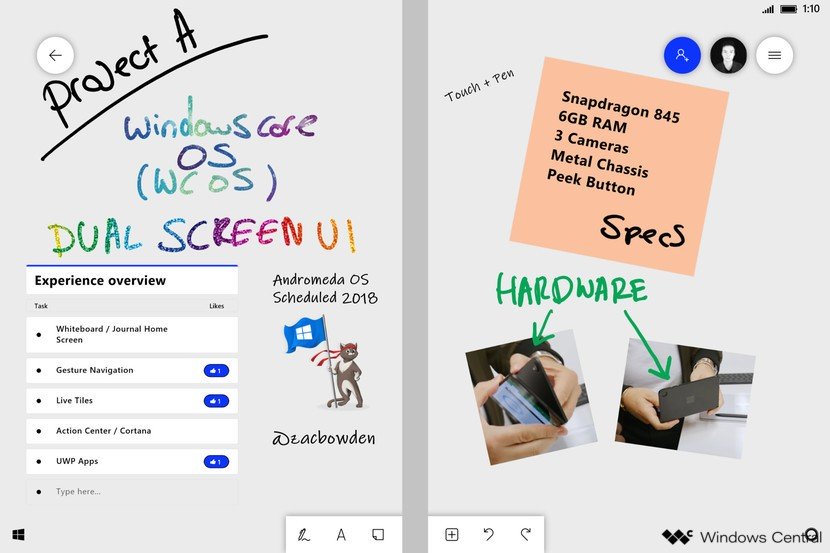
The following image shows the Journal/Whiteboard app in the background, with the Start Menu opened in the bottom left corner. You can see the Start button in that corner, as well as a Cortana button in the bottom right corner that also hid the Action Center. This Journal app would always stay in the background, and any apps that users opened would sit on top of it.
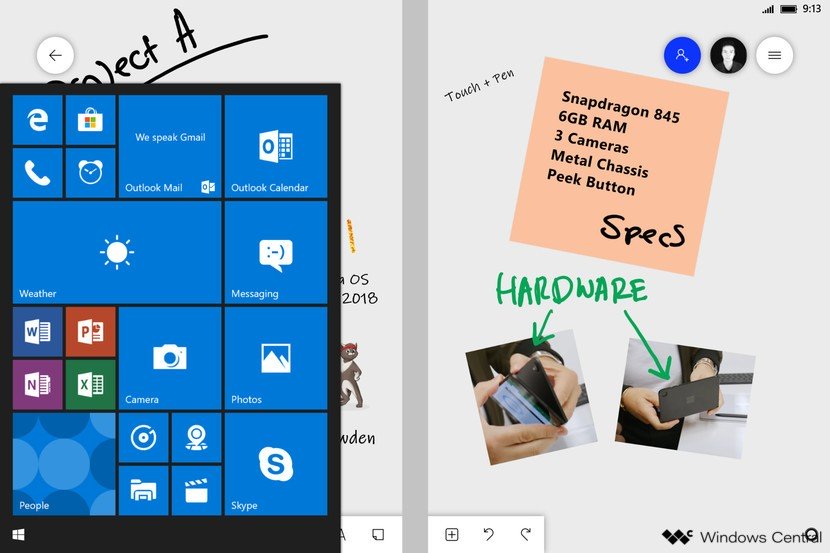
Interestingly, Microsoft wanted its digital assistant to be the entry point for all notifications in Andromeda OS. “Notifications would be sorted into the Action Center, and the Cortana icon would pulsate in the bottom right to alert you when you’ve missed a notification,” explained Bowden. You can see a mockup of this UX below.
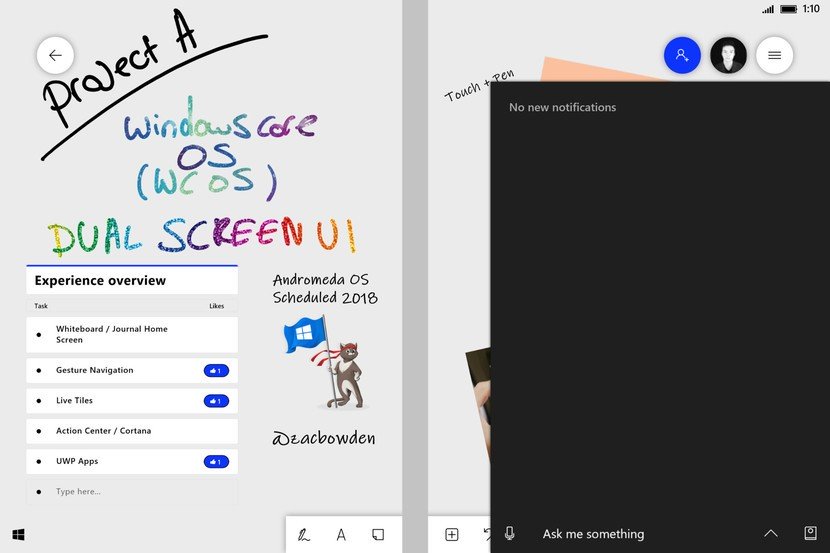
Just like how Android works today on Surface Duo, AndromedaOS would have used various gestures to interact with apps on the dual-screen device. “The OS was heavily gesture-based, with a swipe in from the left opening the Start menu, and swipe in from the right opening the Action Center. A swipe down from the top revealed a Control Center for things like Airplane Mode and Bluetooth settings, and a swipe up would reveal Task View or allow the user to drag an app to span it across both screens,” Bowden explained.
The Continuum experience that Microsoft built for AndromedaOS, which was named Productivity mode, was based on Polaris, a version of Windows Core OS for the desktop. This Productivity Mode would be enabled when an Andromeda prototype was docked to an external display, and mimic the experience of using a real Windows 10 PC “with an entirely modern core and no legacy components.” You can see a mockup of this Productivity Mode below.
Andromeda never saw the light of day, and Bowden believes that the project was delayed indefinitely around the middle of 2018 after several delays and multiple challenges to solve. “The project was behind schedule and showed no sign of catching up. This, added to the fact that the product had a major app gap problem made the decision to cancel the project the right one. Microsoft did consider emulating Android apps on top of Windows before this, but there was no viable end-user experience that could be built around sideloading Android APKs,” Bowden wrote.
The good news is that some of the work that Microsoft engineers have done on AndromedaOS could be reused for Windows 10X, which Microsoft demoed first on the Surface Neo last year. However, Microsoft has since delayed the Surface Neo and Windows 10X should evolve into a Chrome OS alternative with a heavy focus on web apps, with the ability to stream legacy Win32 apps.
Microsoft spent years working on Andromeda, but the decision to use Android for the Surface Duo was the right call. This solved the app gap problem that AndromedaOS had, and there’s now a growing ecosystem of dual-screen devices from Samsung, Motorola, Huawei, and LG. Android is now a mature platform and Microsoft’s mobile platform of choice, and the Your Phone app on Windows 10 has created unprecedented synergies that we never imagined during the Windows Phone era.
Adapting Windows for new form factors is certainly no easy task, and it remains to be seen if Microsoft can pull it off with Windows 10X after failing to do so with AndromedaOS. We still don’t know much about this new Windows-based OS, but a previous report from ZDNet’s Mary Jo Foley suggested a potential release in the first half of 2021.

